Food & Drink
Review: Chef Brian Lavin Makes Triumphant Return with Costiera
After a few years spent spreading his culinary wings on the West Coast, Lavin is back in Baltimore and pushing the envelope on classic Mediterranean cuisine.
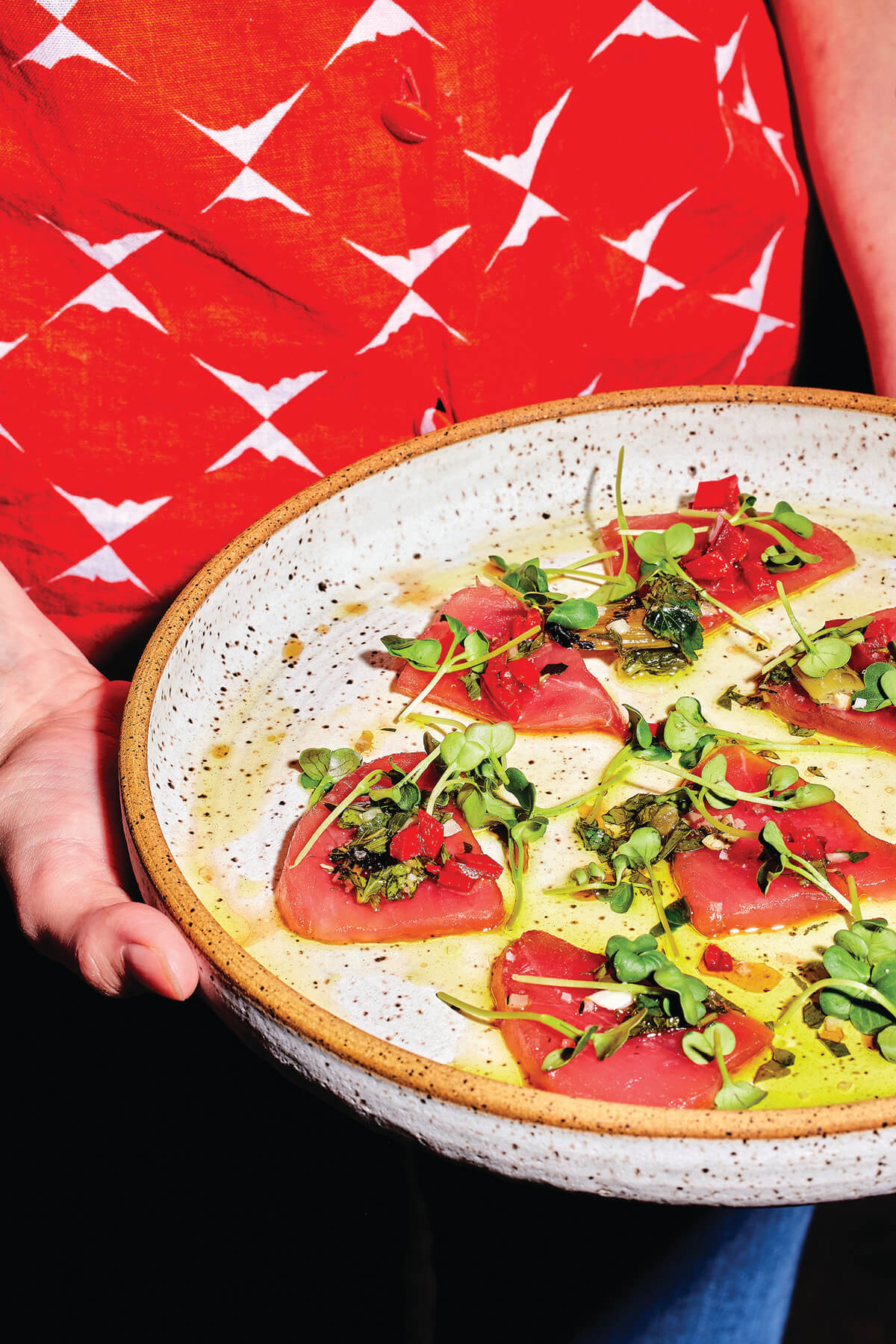
On a mid-March night, less than two months into opening, almost every table and barstool at Costiera percolates with energy and excitement. Diners on dates, or with little ones in tow, or sitting solo at the bar, occupy every inch of the space, whose name means “coastline” in Italian.
“It’s almost as if everyone was waiting for a restaurant like this to open,” says assistant manager Gilles Mascarell, as patrons twirl ribbons of tagliatelle between sips of Sicilian wine. That’s exactly the case.
Situated on the edge of Little Italy in a neighborhood of mostly red-sauce joints, Costiera offers a lighter spin on Boot Country cuisine with its focus on seafood and vegetable-laden dishes.
Back in 2019, chef—and Howard County native—Brian Lavin closed the doors of his Highlandtown darling Gnocco, and headed west to the sunny climes of California to spread his culinary wings and work in the same state as his pastry chef sister. Before that, Lavin burst onto the culinary scene some 15 years ago, first making his mark at Salt in Butchers Hill and later at Fork & Wrench in Canton. This was at a time when innovative chef-driven spots were just beginning to burgeon in Baltimore. So it’s safe to say that before leaving town, he’d built a loyal following.
Opening Costiera has been a full-circle moment for the now-36-year-old chef. He and Costiera co-owner, Sam White, became fast friends while rooming together in Rome during a study abroad program. They later became co-owners of Gnocco. Both worked with Mascarell when he was a server at Gnocco, and Lavin also worked with Mascarell at Salt.
“I always knew we’d get the band back together,” jokes Lavin.
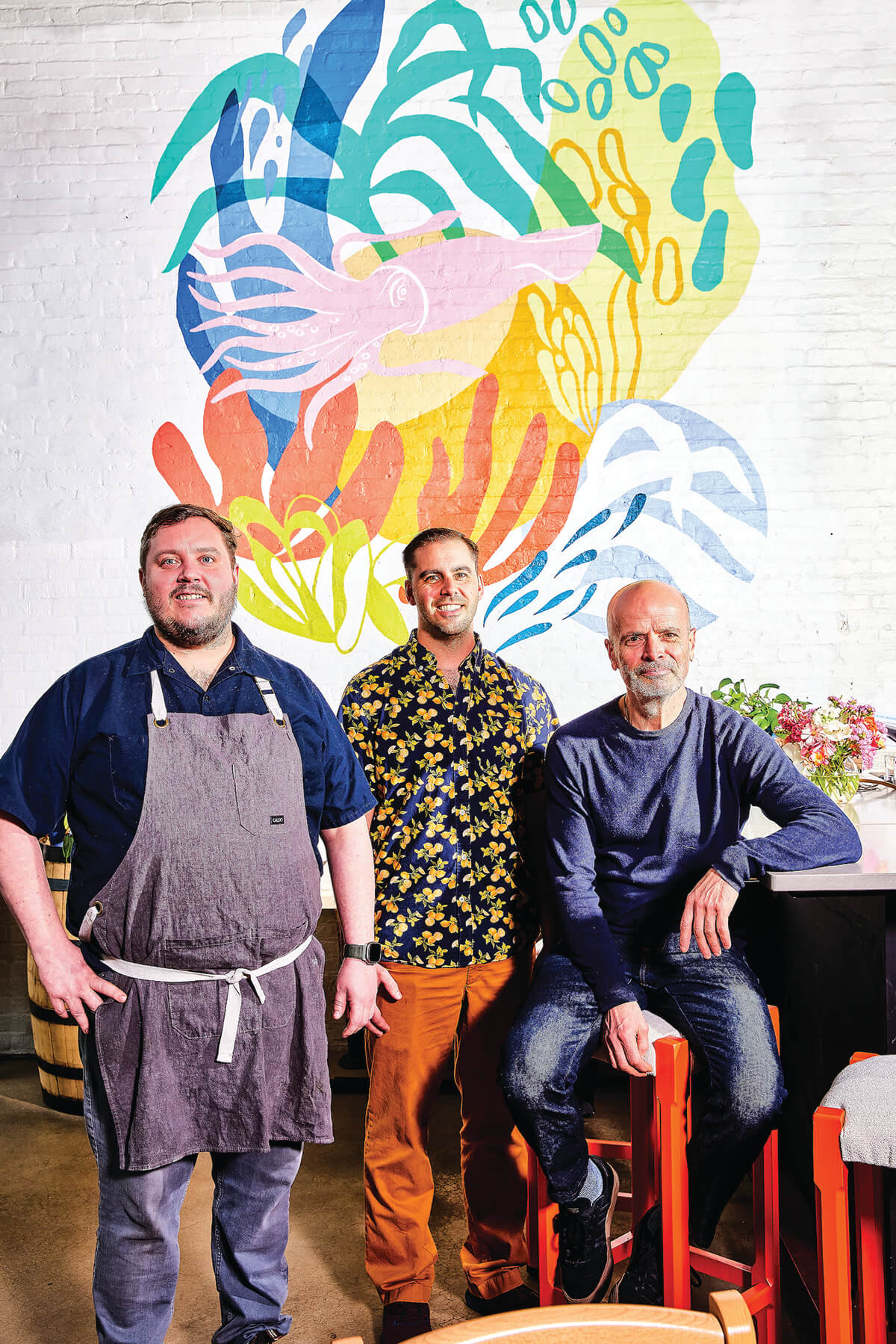
At Costiera, Lavin pushes the envelope on classic Mediterranean cuisine, with a focus on local sourcing and modern flavors—and seafood reigns supreme. The reasonably priced menu includes snacks, salads, and crudos, small plates, pastas, and several entrees.
A meal here should start with all of the following: the instantly addictive fried Castelvetrano olives spiked with a spicy Calabrian ’nduja salami and topped with a dollop of lemon-parsley aioli; the whole-wheat focaccia with flecks of sea salt that’s dense and delicious and served with a sweet and creamy, cloud-like whipped ricotta; and a plate of swordfish meatballs served on a house-milled polenta topped with a zesty puttanesca sauce.
A slate of salads and crudos—including a fennel and celery “Caesar” and a scallop crudo with crispy sunchokes and a splash of tarragon-grapefruit vinaigrette—are equally worthy of some real estate at your table. Order a few of these snacks or starters over a negroni or consider a glass of prosecco on tap or a bottle of wine from White’s well-curated spirits list while you contemplate the other offerings.
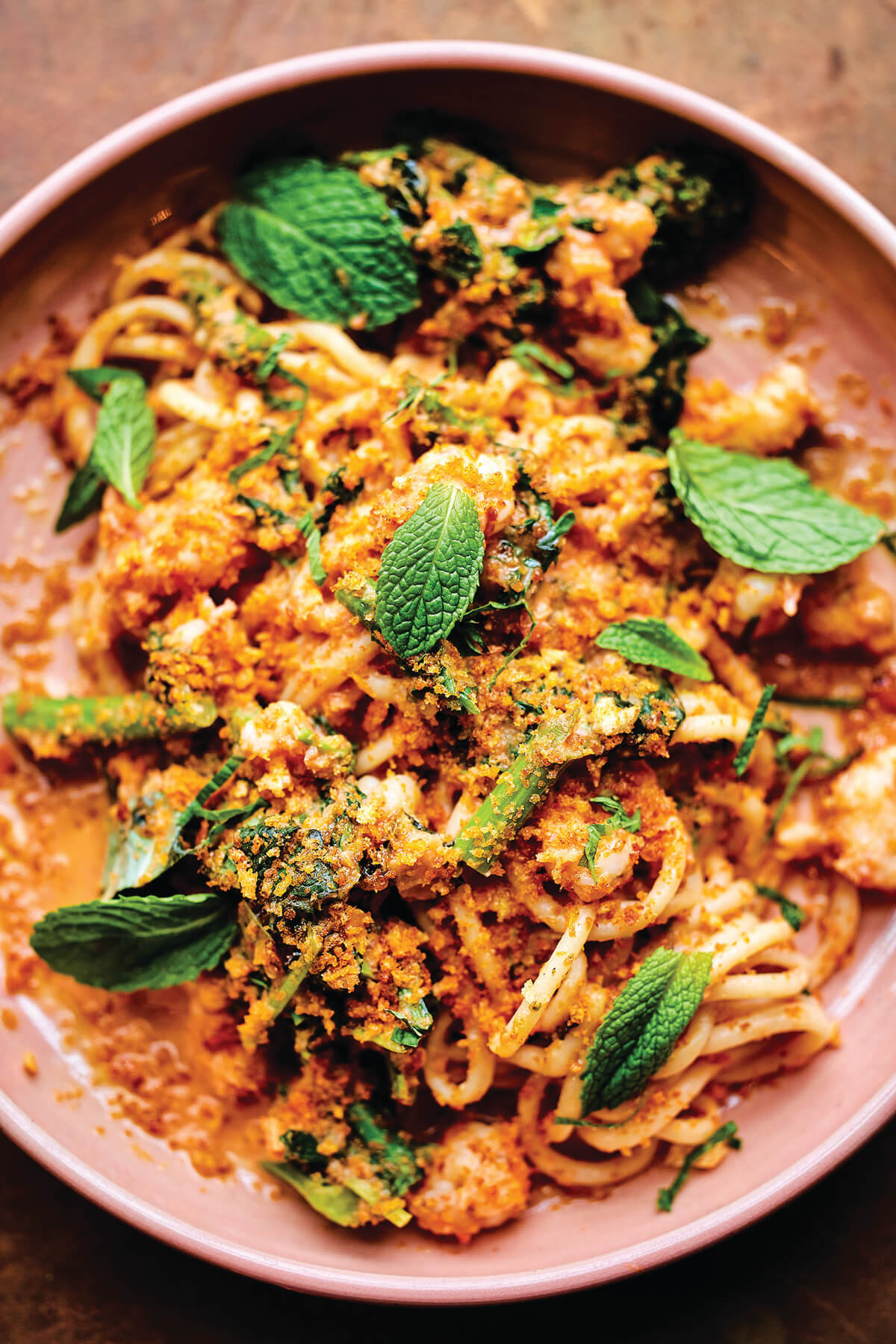
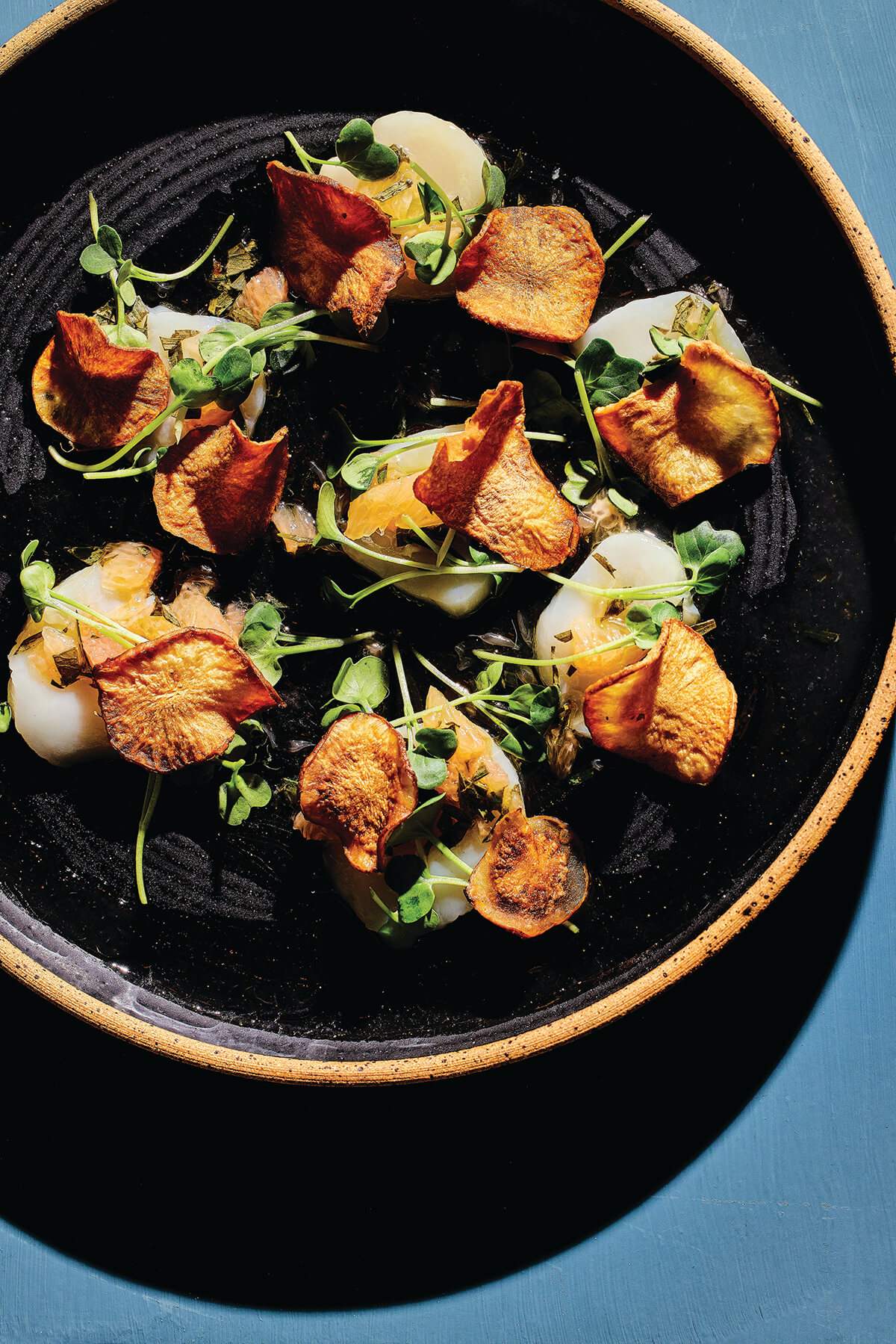
Any visit should also include at least a few of Lavin’s flavorful pasta dishes. On our visits, the standouts were a toothsome rigatoni with a bright kale and walnut pesto that’s mixed with threads of hand-stretched stracciatella cheese; and the rock shrimp bucanti lacquered in a tangy, basil-scented tomato cream that’s tossed with rapini and toasted breadcrumbs. Fans of Lavin’s squid ink gnocchi—featuring slow-braised calamari that reduces to an umami-rich ragu—will be happy it’s just as they remembered at Gnocco.
Beyond the pasta, there’s also a terrific whole roasted orata stuffed with fennel fronds, fennel, and lemon resting on a swoosh of garlic labneh. With its crispy, caramelized skin and juicy flesh, the dish is a master class in how to cook fish. And the accompaniments—crisp smashed potatoes and slightly bitter escarole—round out the plate perfectly.
On both of our visits, Mascarell, who helped tend to our table—and whose artwork graces the walls—enhanced the experience by doting on every detail. (At this point, his C.V. includes so many local favorites, from Arômes to Alma, he feels like a friend we keep bumping into by accident.)
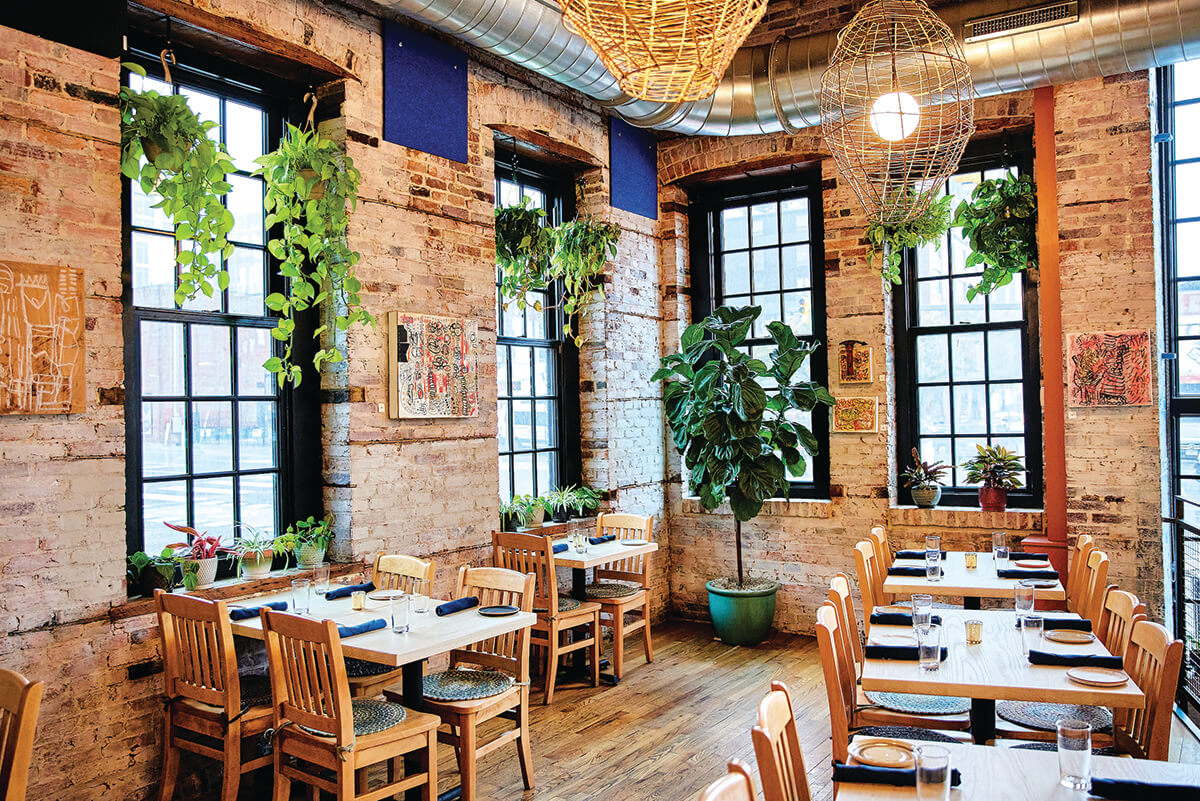
The space itself boasts double-height ceilings, a commodious bar, pots of greenery in the double-height windows, and a Technicolor hand-painted mural of a squid, an icon of the Mediterranean sea. (Our only complaint: Come nightfall, the lighting is so dim that it’s sometimes difficult to fully appreciate the chef’s picturesque plates—some trendy table lights or even track lighting would go a long way.)
Given our focus on the savory side of the menu, we were too full for a proper dessert, but were delighted when Mascarell arrived with complimentary shots of house-made limoncello and tiny pine-nut cookies that come gratis with every check.
The goal, says Lavin, is “to make everyone feel welcome and happy and hopefully have a good time here.”
From the looks of the dining room, Costiera is doing just that, in part because Baltimoreans are nothing if not loyal—to their teams, to their hometown heroes, and to their chefs.
It turns out, you can go home again—and when you do, everyone will be waiting.

COSTIERA: 415 S. Central Ave. HOURS: Mon.-Sat. 4-9:30 p.m. PRICES: Snacks, salads, small plates: $6-21; pastas: $22-26; large plates: $35-39. AMBIANCE: Rustic simplicity.